Sixty percent of the world’s wildlife populations have been lost in just over the last forty years. Sixty percent! That is the estimate from the latest Living Planet Report[1] published recently by the World Wildlife Fund. Ewing’s Environmental Commissioners and Green Team members have noted their alarm about the loss of biodiversity and vanishing wildlife in numerous published materials and posts. We have read reports that inform us that the “current massive degradation of habitat and extinction of many of the Earth’s biota is unprecedented and is taking place on a catastrophically short timescale.”[2] We have also personally taken note of the loss of local wildlife. Where are the boundless flocks of migrating birds that filled the autumn skies of our youth, the omnipresent lightning bugs that lit up our backyard summer evenings, the butterflies, the bees, the bats…?
Habitat loss is key. Suburban neighborhoods have exchanged healthy native habitats for vast stretches of manicured lawns which contribute little of ecological value. Industrial agriculture also plays a heavy role in unsustainable loss of habitat while also promoting synthetic chemicals and monocropping. We depend upon wildlife for critical ecosystem services and again, we wonder if we are destroying our planet’ s ability to support our way of life.
If you too are alarmed about the extent of this crisis and wonder what you can do to ensure that your children and grandchildren will be able enjoy the natural world as we did, we invite you to follow the example of two of Ewing’s Environmental Commissioners, both wildlife champions, who work to promote and protect wildlife habitat and diversity on their own properties. Ewing Environmental Commissioner, former chair, and avid birder Lee Farnham participates in Project FeederWatch, a citizen science program run by the Cornell Lab of Ornithology that counts birds and species at local feeders from November through April each year. This project helps scientists quantify the health of bird populations around the nation. And Environmental Commissioner and Green Team Chair Joanne Mullowney comes at the problem from her long-term gardening experience and now gardens for wildlife on her National Wildlife Federation certified property. They are taking action for vanishing wildlife species and we encourage you to read on to learn how you can do the same.
National Wildlife Federation’s Garden for Wildlife Program
The goal of the National Wildlife Federation’s Garden for Wildlife Program is to encourage all land owners to live more sustainably and harmoniously with nature on their own properties. This means changing landscape management practices to support wildlife by (1) gardening organically and eliminating the application of synthetic chemicals to the landscape, (2) removing some of your lawn to provide food, cover and shelter for wildlife thru the establishment of native plant communities, and (3) providing the water sources, however small, that wildlife needs to survive.
Lest you think that gardening for wildlife does not fit the suburban landscape ethic, we strongly disagree. A well-maintained habitat garden will not only be a refuge for our vanishing wildlife; but can be structured and beautiful. Joanne participates in the Green Team’s Annual Garden Tour and is proud to invite people to visit her gardens during the Tour each year.
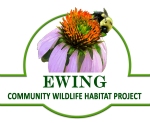 If you would like to learn more about how to provide habitat in your own yard and gardening for wildlife, we have enrolled Ewing in the National Wildlife Federation’s Community Gardening for Wildlife Program. See our new website, the Ewing Community Wildlife Habitat Project, and join us to protect wildlife in Ewing. There are currently about 50 certified gardens in and about town.
If you would like to learn more about how to provide habitat in your own yard and gardening for wildlife, we have enrolled Ewing in the National Wildlife Federation’s Community Gardening for Wildlife Program. See our new website, the Ewing Community Wildlife Habitat Project, and join us to protect wildlife in Ewing. There are currently about 50 certified gardens in and about town.
Project FeederWatch
Project FeederWatch, a program for birders, is a citizen science program run by the Cornell Lab of Ornithology and Bird Studies Canada and is a November-April survey of birds that visit feeders at backyards and common areas in North America. Participants count the birds they see at their feeders and their species on a regular schedule and send their counts to Project FeederWatch. Anyone interested in birds can participate.
This fall and winter season, Lee is once again going to pick up his binoculars to count the birds that visit his backyard feeders for project scientists. His beautiful and wonderfully wooded backyard is ideal for his avian visitors and offers plenty of shelter, cover and food (and really should be NWF certified).
Lee’s observations will be added to those of thousands of others across North America to help understand the distribution and abundance of birds that visit American feeders. This data also helps scientists to understand:
- Changes in the winter ranges of feeder birds
- The kinds of foods and environmental factors that attract birds
- How disease is spread among birds that visit feeders
His data can help scientists show how climate change and decreased habitat are impacting winter bird communities.
In the coming months we will be posting the results of his weekly backyard observations. If you feed the birds in your backyard, you too can take on the role of citizen scientist while enjoying avian backyard wildlife up close this coming FeederWatch season. All you need to do is to install a feeder, count the birds that visit, and report your results to FeederWatch scientists. For more information about how you can participate go to https://feederwatch.org/about/how-to-participate/.
You may not be a birder, but there are many ways people participate in citizen science activities to help scientists around the country monitor and manage wildlife populations. From the Monarch Larva Monitoring Project, to the North American Amphibian Monitoring Program, to the annual Horseshoe Crab Count during spawning season, and the spring and fall seasonal butterfly counts for the North American Butterfly Association, there are many opportunities to do so and the contributions from citizen scientists provide data on scales previously unattainable for most research teams. We also believe that anyone can plant native plants in their yards and learn to garden more sustainably.
Join us. You will reap a truer enjoyment of the natural world and a deeper connection to nature. Do it because wildlife matters and is worth protecting.
[1] Living Planet Report – 2018: Aiming Higher. Grooten, M. and Almond, R.E.A.(Eds). World Wildlife Federation, Gland, Switzerland. 2018.
[2] The Current Biodiversity Extinction Event: Scenarios for Mitigation and Recovery. Michael J. Novacek and Elsa E. Cleland. PNAS 2001 May, 98 (10) 5466-5470.




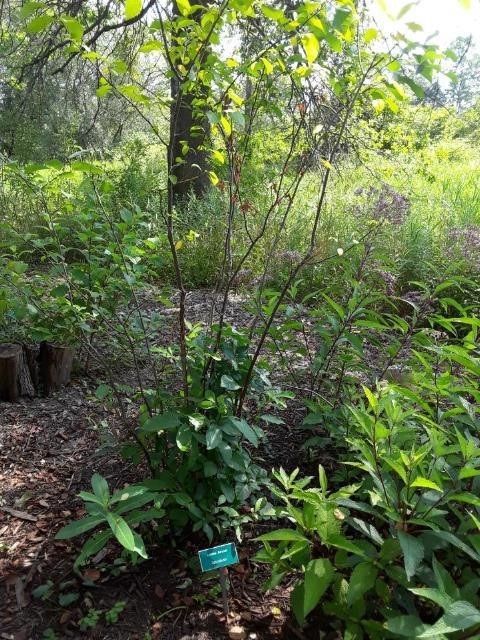


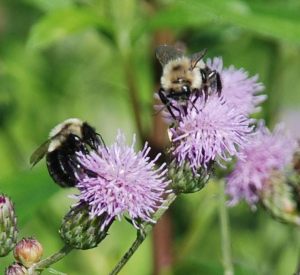




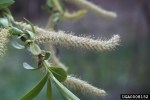

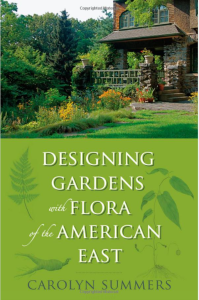 Carolyn Summers’ Designing Gardens with Flora of the American East (New Brunswick: Rutgers University Press, 2010) is an excellent book. It begins by laying out the reasons to garden with native plants (which the book insistently calls “indigenous plants”). Its reasons include providing habitat for birds, bees, and bugs, as well as making use of fantastic indigenous plants that simply don’t get enough play in the big-box nursery business. The book also discusses the jargon of the nursery business and the implications of that jargon for the gardener who wants to be ecologically responsible (such as how to know when cultivars and hybrids successfully function like native plants and when they don’t).
Carolyn Summers’ Designing Gardens with Flora of the American East (New Brunswick: Rutgers University Press, 2010) is an excellent book. It begins by laying out the reasons to garden with native plants (which the book insistently calls “indigenous plants”). Its reasons include providing habitat for birds, bees, and bugs, as well as making use of fantastic indigenous plants that simply don’t get enough play in the big-box nursery business. The book also discusses the jargon of the nursery business and the implications of that jargon for the gardener who wants to be ecologically responsible (such as how to know when cultivars and hybrids successfully function like native plants and when they don’t).

